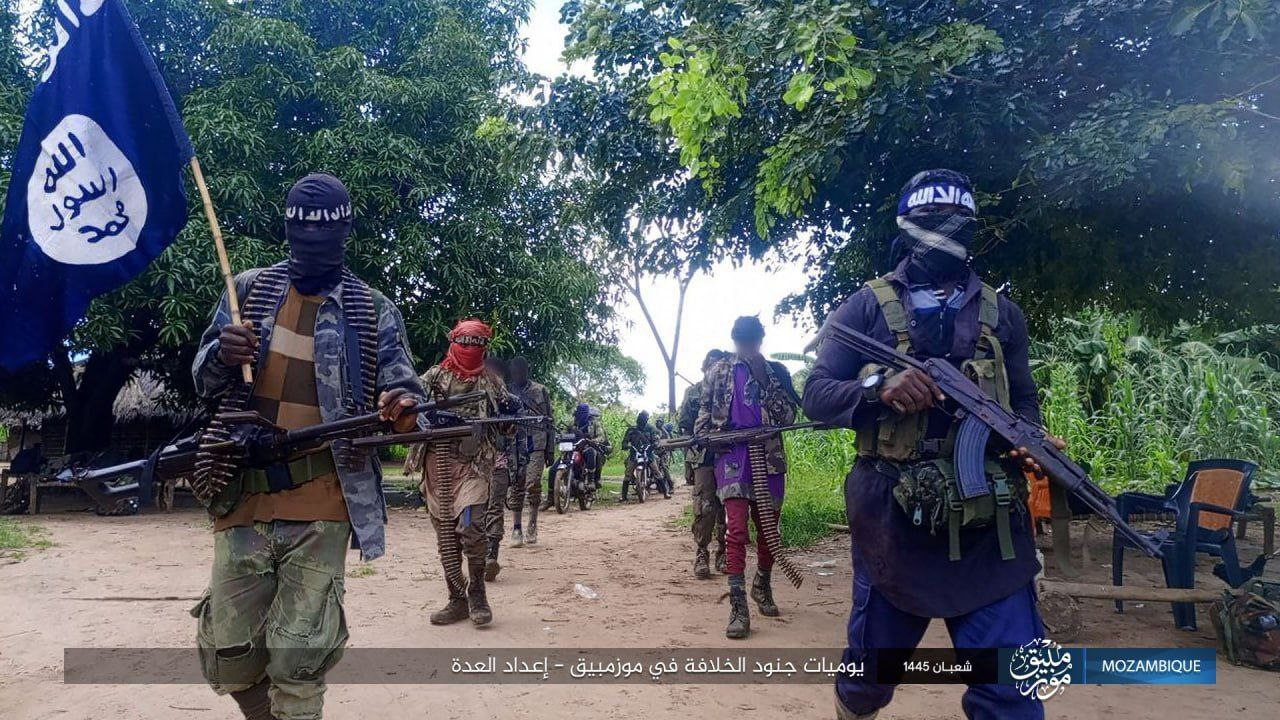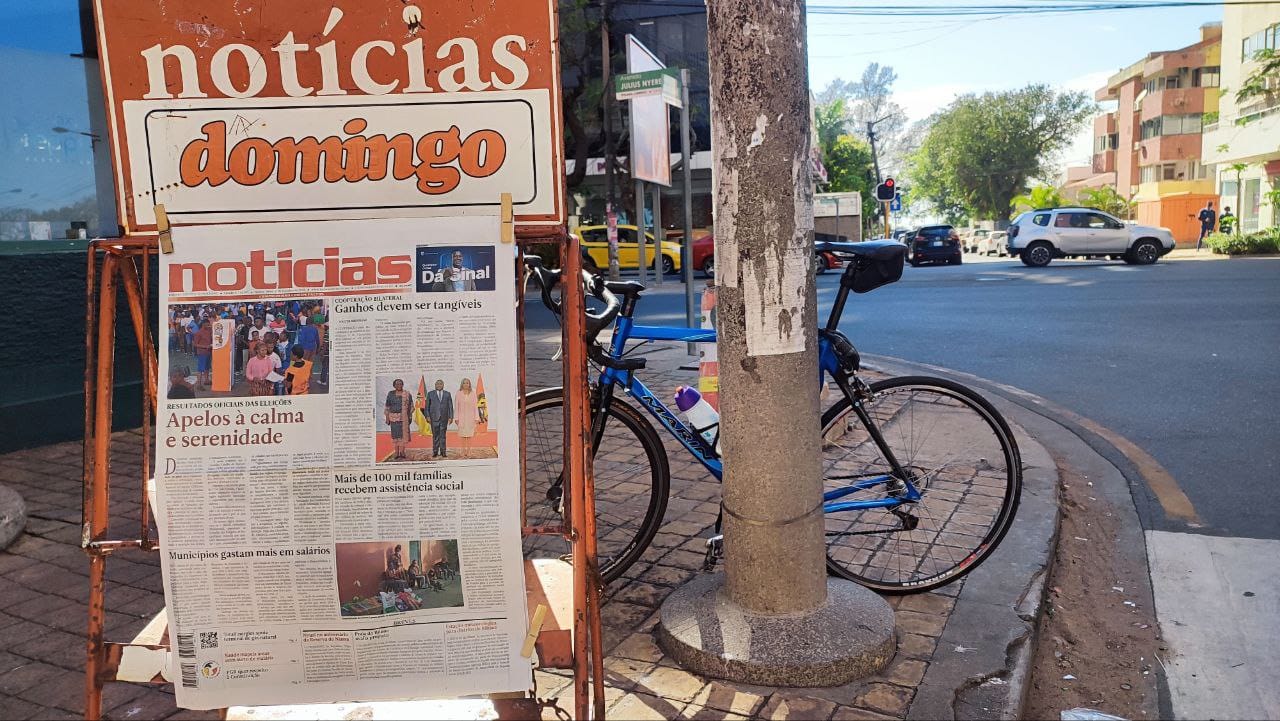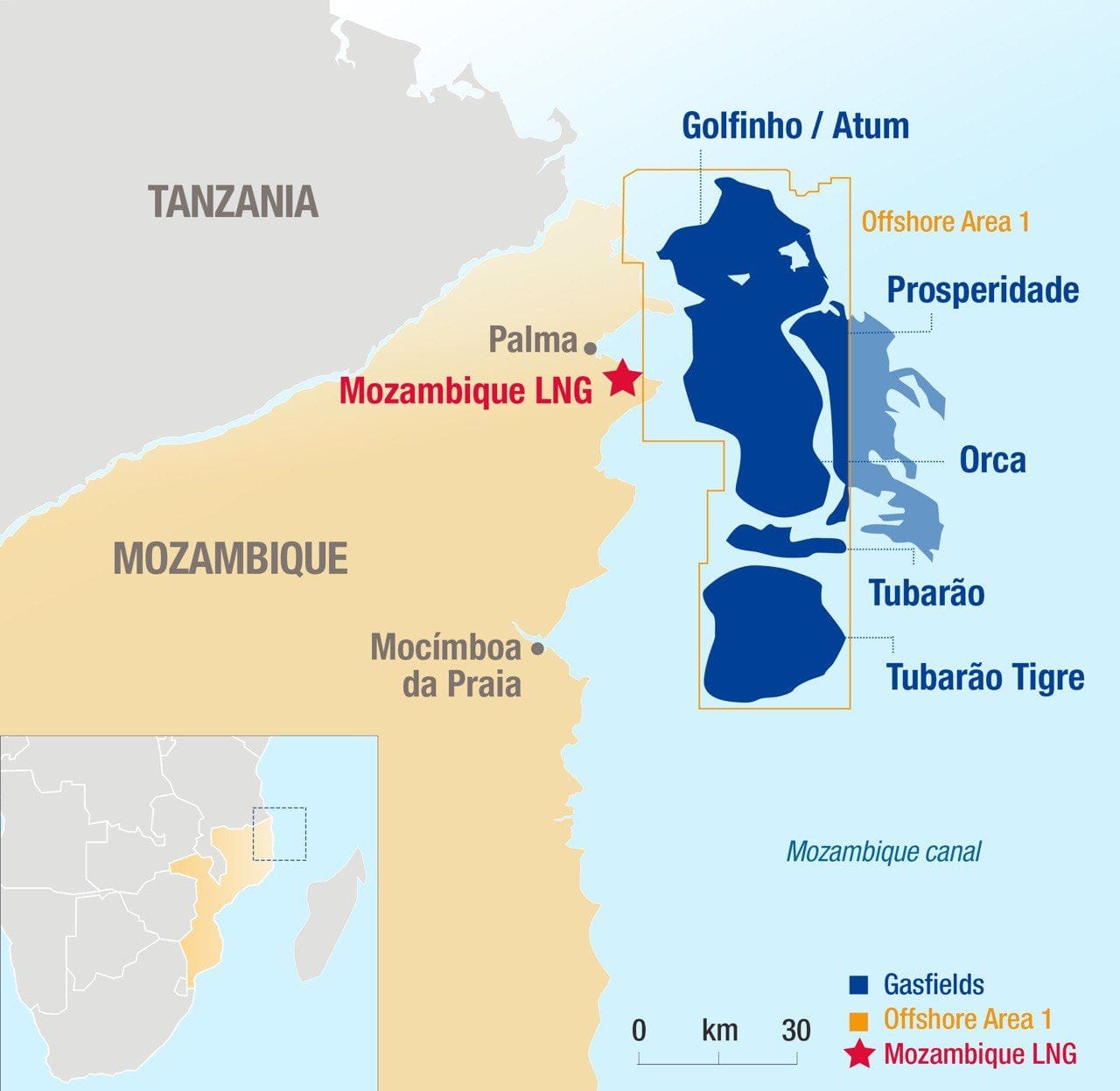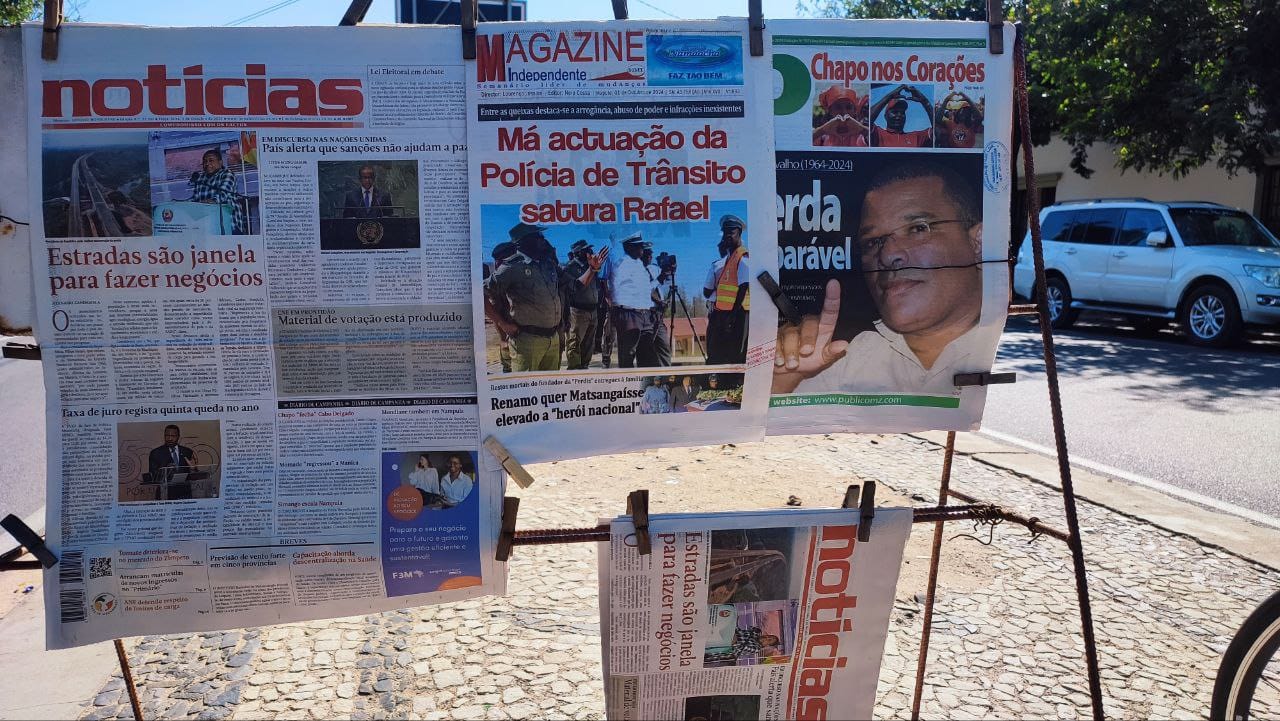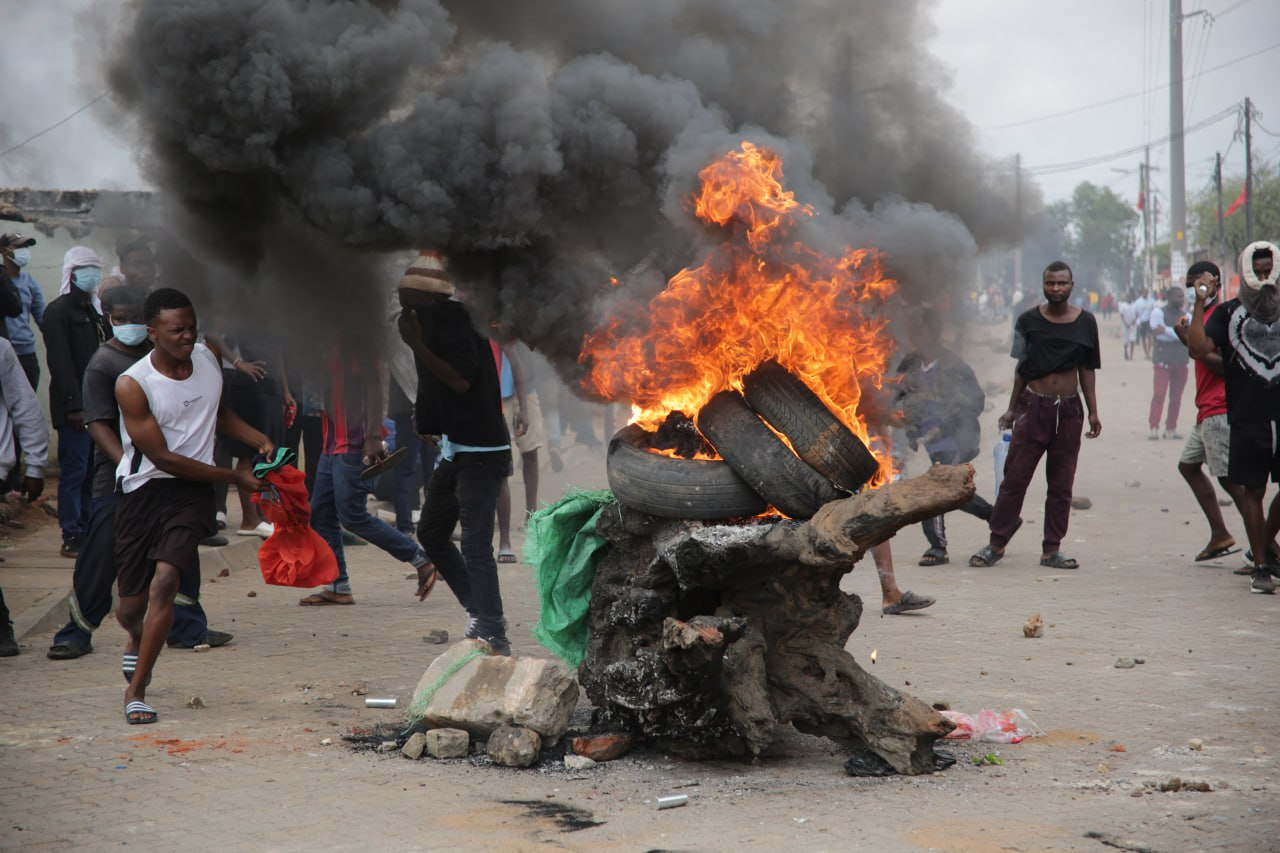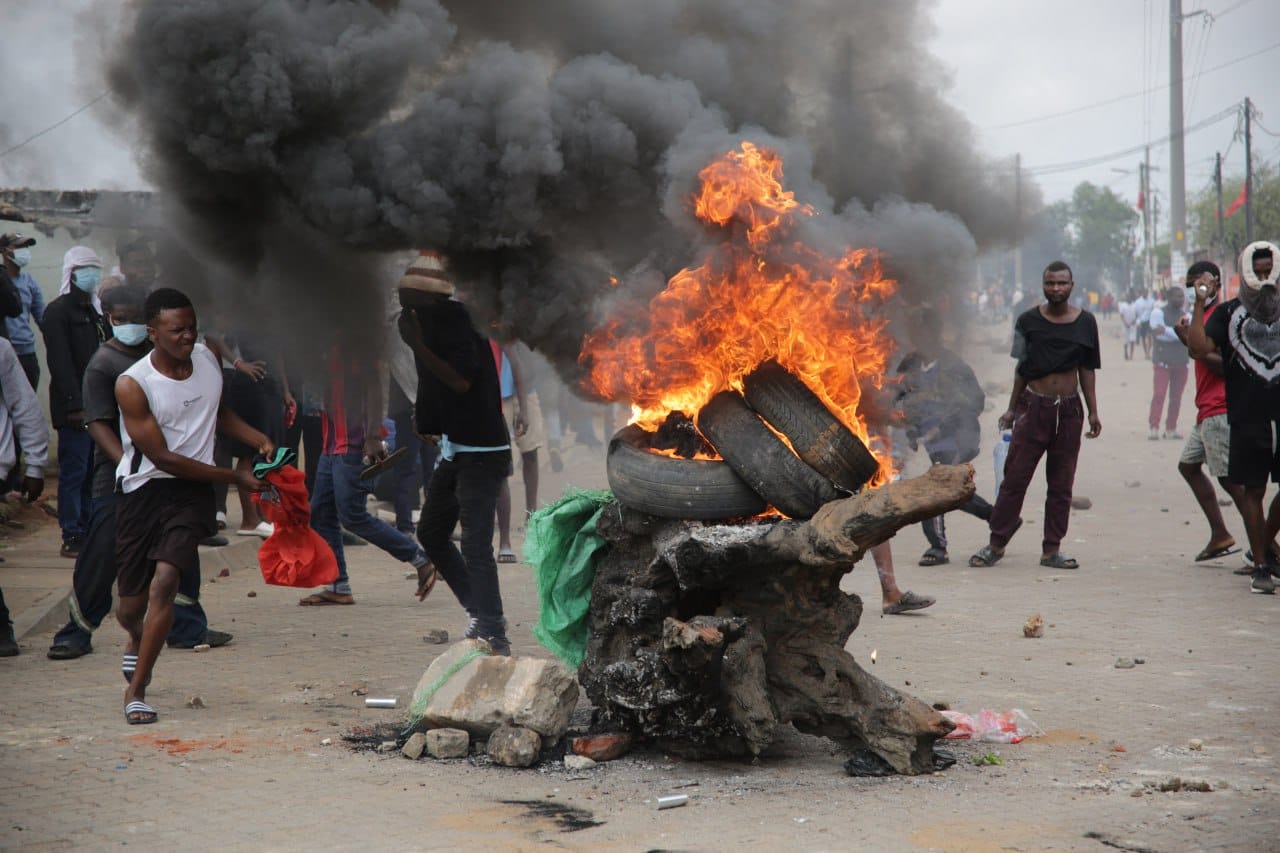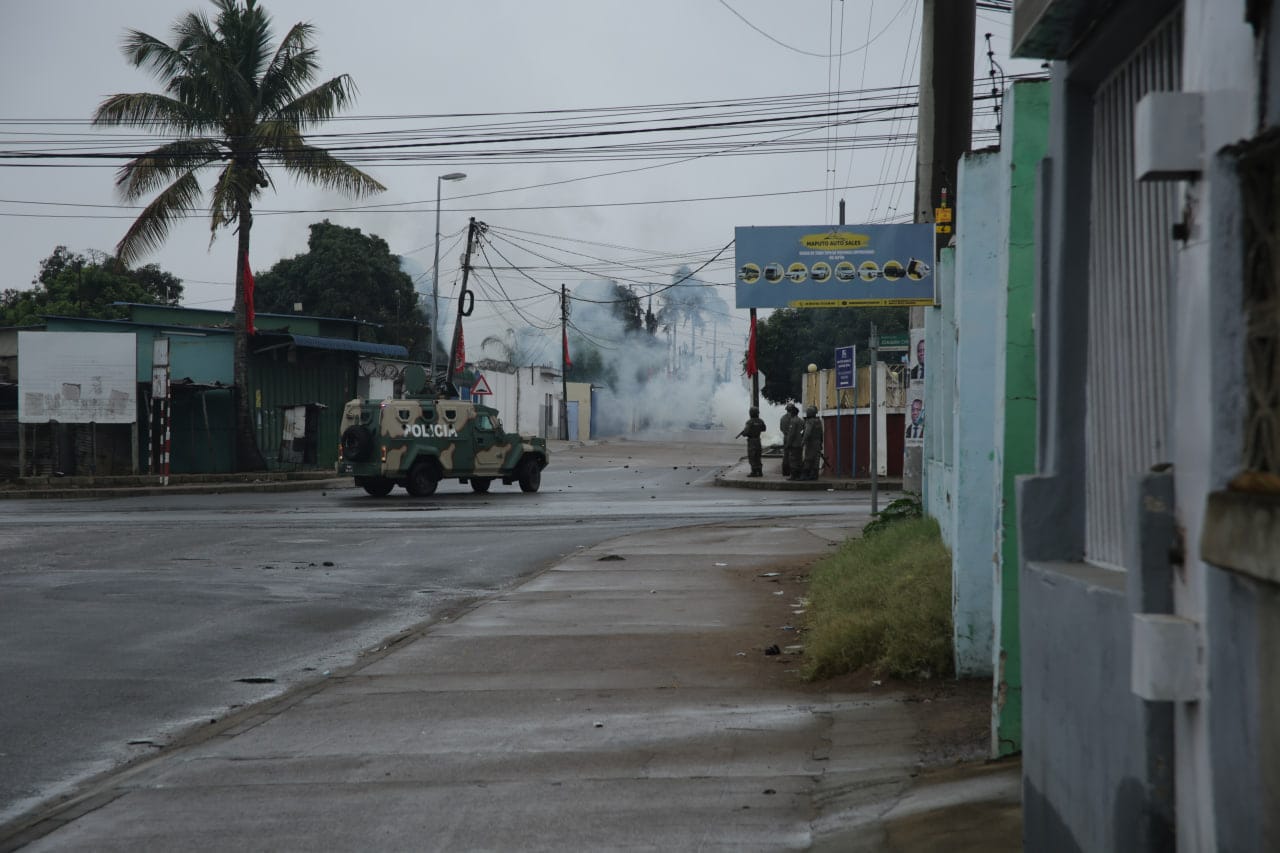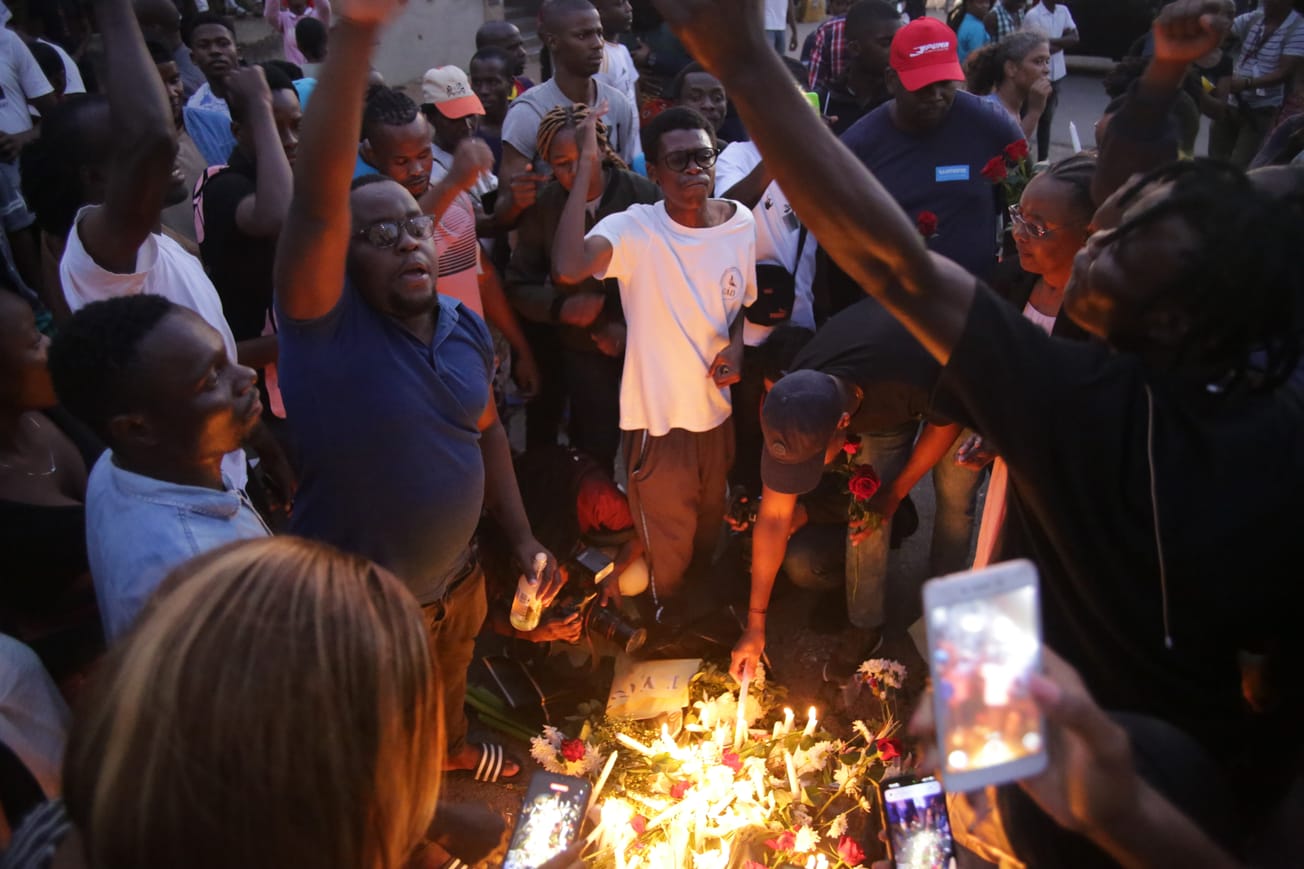First published as part of the Cabo Ligado Monthly: February 2024

IS featured Mozambique across its media channels in February. The weekly al-Naba produced an infographic of ISM’s activities from 26 December to 16 February, while IS also issued thirteen claims for incidents over the month. More unusually, they also released five separate photo reports over the month, containing 94 photographs. The material presented gives us clues about the leadership and the importance of IS’s jihadist ideology to ISM. We get a sense of current numbers, the resources at their disposal, and a sense of the relationship with IS media operations. We also get an insight into the conditions in which Mozambique’s military operates.
One man appears in each of the three photo reports issued by IS to cover its actions in Chiúre during the month. A photograph taken in Muirota village on 15 February, judging by an earlier IS claim for an attack there, shows a masked man in military fatigues overseeing a beheading. On the stock of his rifle is written the name “Abuu Jafar.” He appears again in a photograph taken in Samuel Magaia village on 17 February, again overseeing a beheading. The same man is seen in a photograph taken on 26 February in Monothe village. He stands outside a church with his foot on a cross and is flanked by three men, two of whom display a black and white IS flag. Little is known of ISM’s leadership in the wake of the killing of Bnomade Machude Omar in August 2023. However, this man’s prominence in the photo reports indicates that he has a leadership position. What position he might hold is not known. Also in February, reports emerged of a leader with a similar name, Abdullahi Janfar Nurdin, referred to in one report as simply Janfar Nurdin. According to Redactor newspaper, he is from Cabo Delgado and was manning a road block in Macomia on 11 February.
Photographs from Chiúre district projected IS’s jihadist ideology. Almost 50% showed the destruction of churches, “Christian schools,” and crosses. Six photographs were of beheadings of “Christians,” overseen by “Abuu Jafar.” In contrast, those from Macomia and Mecufi districts projected military power. Of the 51 photographs from the 30 January ambush of a joint FADM/Local Force patrol in Mecufi district and the 9 February attack on the Mucojo outpost, 22 depict victims.
The pictures from Mucojo confirm that a considerable well-armed force was deployed there. Local sources said that up to 150 fighters were involved. One photograph of fighters in a marching formation shows dozens. ISM is certainly stronger after the attacks. Pictures of weaponry seized during the two incidents show at least 19 light machine guns, 10 medium machine guns, and one heavy machine gun. At least five grenade launchers are also seen, as well as an array of ammunition.
Capturing such themes so clearly in such a short period of time indicates that there is effective communication with IS Central Media, which has clear guidelines for the types of images it can use. This is also seen in the al-Naba infographic, which presents details of events that corresponded closely to ACLED records for that period.
Finally, the Mucojo pictures give some insight into the conditions in which Mozambique’s military operates. They seem as well equipped, in weaponry and battle dress, as their attackers and equally reliant on materials scavenged locally for shelter. One typical coastal bed strung with coconut rope is shown in a lean-to shelter made from a scavenged wooden door. What was perhaps most apparent was their absence in Chiúre district, through which ISM seemed to move freely in February.

